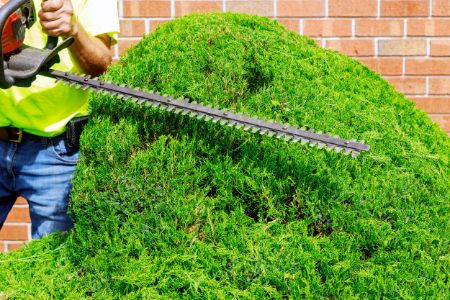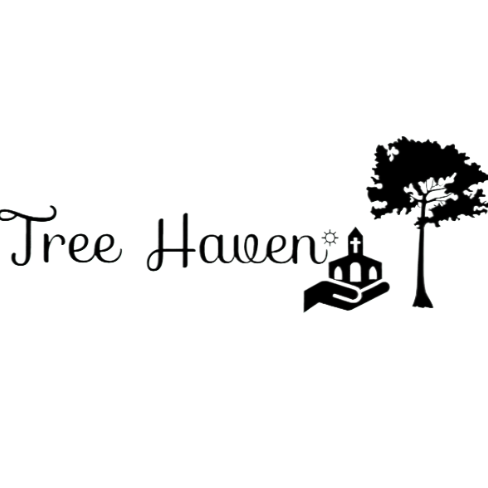Trees are a vital part of any landscape, providing shade, beauty, and environmental benefits. However, when a tree starts leaning, it can be a cause for concern. For homeowners in Duluth, GA, understanding the reasons behind a leaning tree and knowing how to address it is crucial. Additionally, if tree removal becomes necessary, tree chipping services offer an efficient and eco-friendly way to manage the debris. In this comprehensive guide, we’ll explore why trees lean, what you can do about it, and how tree chipping services work to turn tree debris into valuable resources.
Why Is Your Tree Leaning? Common Causes and Solutions
A leaning tree can be a sign of underlying issues that need immediate attention. Here are some common causes and what you can do about them:
1. Natural Growth Patterns
Some trees naturally grow at an angle due to their species or environmental factors. If the lean is gradual and the tree appears healthy, it may not be a cause for concern.
What to Do:
- Monitor the tree regularly for changes in its lean or health.
- Consult an arborist to ensure the tree is stable.
2. Wind and Storm Damage
Strong winds or storms can push trees off balance, especially if they have shallow roots or are top-heavy.
What to Do:
- Inspect the tree for damage, such as broken branches or cracks in the trunk.
- If the tree is salvageable, consider staking or cabling to provide support.
3. Soil Erosion or Saturation
Heavy rains or poor drainage can weaken the soil around a tree’s roots, causing it to lean.
What to Do:
- Improve drainage around the tree to prevent waterlogging.
- Add mulch or soil to stabilize the root system.
4. Root Damage or Disease
Root damage from construction, pests, or disease can compromise a tree’s stability, leading to a lean.
What to Do:
- Have an arborist inspect the roots for signs of damage or disease.
- If the tree is beyond saving, removal may be necessary.
5. Improper Planting
Trees planted at an angle or in unstable soil may develop a lean over time.
What to Do:
- Young trees can sometimes be straightened with proper staking.
- For mature trees, consult a professional to assess the risk.
When to Remove a Leaning Tree
While some leaning trees can be saved, others pose a significant risk to property and safety. Here are signs that removal may be necessary:
- Sudden Lean: A tree that suddenly leans after a storm or heavy rain may have root damage.
- Cracks or Splits: Visible cracks in the trunk or major branches indicate structural weakness.
- Exposed Roots: If the roots are lifting out of the ground, the tree may be unstable.
- Proximity to Structures: A tree leaning toward a house, power lines, or other structures should be evaluated immediately.
- Declining Health: Signs of disease, such as dead branches or fungal growth, may mean the tree is beyond saving.
If you’re unsure whether your tree needs removal, consult a certified arborist in Duluth, GA, for a professional assessment.
What Happens After Tree Removal? The Role of Tree Chipping Services
Once a tree is removed, the next step is managing the debris. This is where tree chipping services come in. Tree chipping is an efficient and eco-friendly way to handle tree waste, turning it into useful materials like mulch and wood chips. Here’s how the process works:
1. Assessment and Preparation
The tree service team assesses the site and determines the best approach for chipping. They’ll consider factors like the size of the tree, the volume of debris, and accessibility.
2. Tree Removal and Debris Collection
The tree is cut down and sectioned into manageable pieces. Smaller branches and foliage are gathered for chipping, while larger logs may be set aside for other uses.
3. Feeding the Chipper
The debris is fed into a wood chipper, a powerful machine that shreds it into small, uniform pieces. The operator ensures the process is carried out safely and efficiently.
4. Collecting and Sorting the Chips
The wood chips are collected and sorted based on size and type. Some services offer on-site removal, while others leave the chips for the customer to use.
5. Cleanup and Disposal
The team cleans up the site, removing any remaining debris and ensuring the area is safe and tidy.
Benefits of Tree Chipping Services
Tree chipping offers numerous advantages, including:
- Eco-Friendly Waste Management: Reduces landfill waste and promotes sustainability.
- Cost-Effective Solution: Often cheaper than hauling away large amounts of debris.
- Improves Soil Health: Wood chips used as mulch retain moisture and regulate soil temperature.
- Enhances Safety: Removes potential hazards like tripping or fire risks.
- Versatile End Products: Wood chips can be used for landscaping, composting, or biomass fuel.
Choosing a Tree Service Provider in Duluth, GA
When selecting a tree service provider, consider the following:
- Experience and Expertise: Look for a company with a proven track record.
- Equipment Quality: Ensure they use modern, well-maintained equipment.
- Insurance and Licensing: Verify that the company is insured and licensed.
- Customer Reviews: Check online reviews or ask for references.
- Cost and Services: Compare quotes and services to find the best value.

FAQs About Leaning Trees and Tree Chipping
1. Can a leaning tree be saved?
In some cases, yes. Young trees can often be straightened with staking, while mature trees may require professional intervention.
2. How much does tree removal cost in Duluth, GA?
Costs vary depending on the size of the tree, location, and complexity of the job. On average, expect to pay between 500and500and1,500.
3. What should I do with wood chips from tree chipping?
Wood chips can be used as mulch, compost, or even as biomass fuel. They’re a valuable resource for gardening and landscaping.
4. Is tree chipping environmentally friendly?
Yes! Chipping reduces waste and provides sustainable materials for various uses.
5. How do I know if my tree is a hazard?
Signs of a hazardous tree include sudden leaning, cracks in the trunk, exposed roots, and declining health. Consult an arborist for a professional assessment.
Final Thoughts: Protecting Your Property and the Environment
A leaning tree can be a cause for concern, but with the right knowledge and professional help, you can address the issue effectively. Whether it’s stabilizing the tree or opting for removal, taking action promptly can prevent accidents and protect your property. And when it comes to managing tree debris, tree chipping services offer a practical and eco-friendly solution.
For homeowners in Duluth, GA, understanding the importance of tree care and waste management is key to maintaining a safe and beautiful landscape. So, the next time you notice a leaning tree or a pile of tree debris, remember that help is just a phone call away. Let’s work together to keep our community green and thriving!
-
15 Easy Breakfast Ideas That Save Time
-
20-Minute Air Fryer Recipes Everyone’s Loving
-
Top 10 Quick & Healthy Dinner Recipes for Busy People

